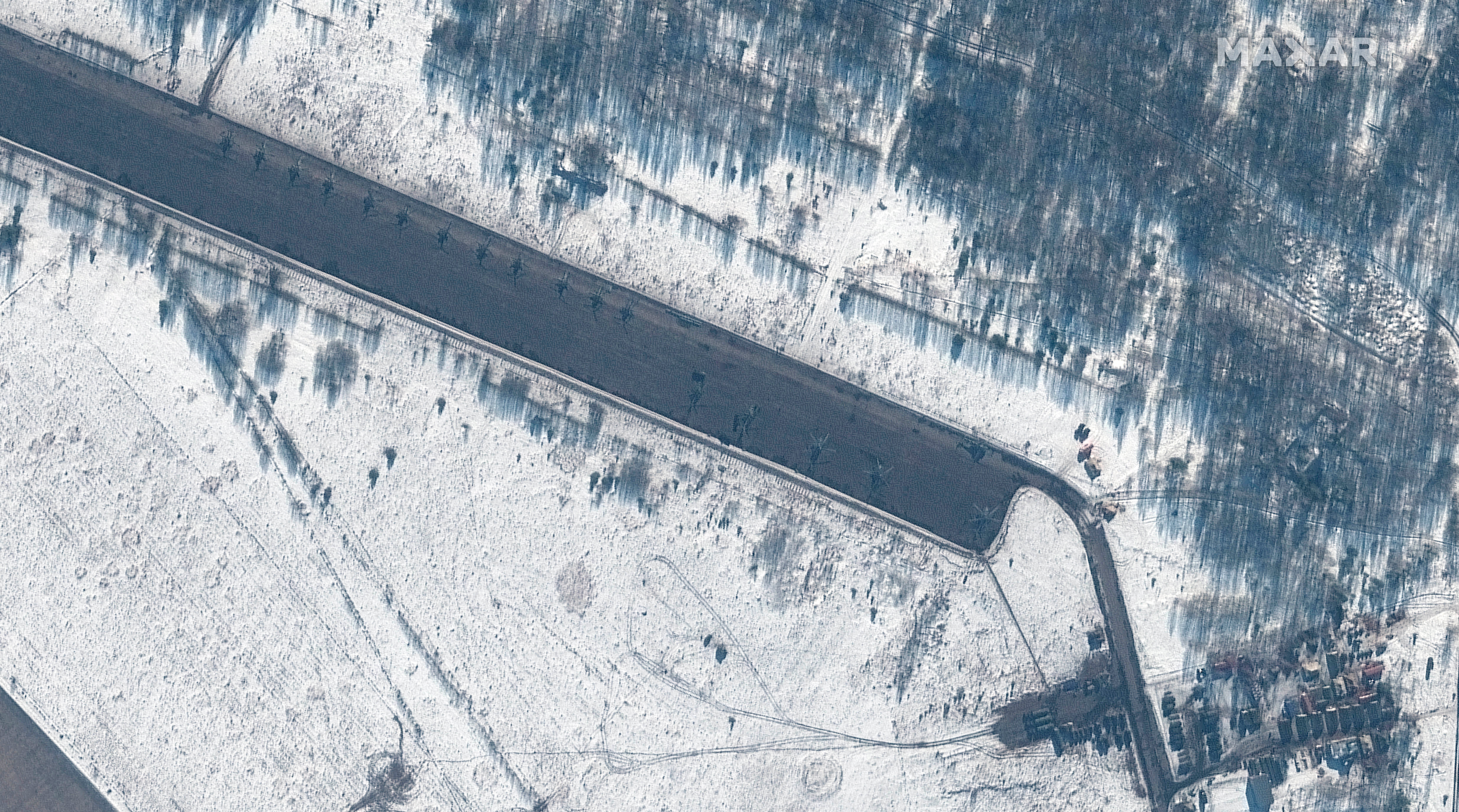Satellite photos give a bird's-eye view of Ukraine crisis
Widely available commercial satellite imagery of Russian troop positions bracketing Ukraine provides a bird’s-eye view of an international crisis as it unfolds

Your support helps us to tell the story
From reproductive rights to climate change to Big Tech, The Independent is on the ground when the story is developing. Whether it's investigating the financials of Elon Musk's pro-Trump PAC or producing our latest documentary, 'The A Word', which shines a light on the American women fighting for reproductive rights, we know how important it is to parse out the facts from the messaging.
At such a critical moment in US history, we need reporters on the ground. Your donation allows us to keep sending journalists to speak to both sides of the story.
The Independent is trusted by Americans across the entire political spectrum. And unlike many other quality news outlets, we choose not to lock Americans out of our reporting and analysis with paywalls. We believe quality journalism should be available to everyone, paid for by those who can afford it.
Your support makes all the difference.Widely available commercial satellite imagery of Russian troop positions bracketing Ukraine provides a bird's-eye view of an international crisis as it unfolds. But the pictures, while dramatic, have limitations.
High-resolution photos from commercial satellite companies like Maxar in recent days showed Russian troop assembly areas, airfields, artillery positions and other activities on the Russian side of the Ukrainian border and in southern Belarus as well as on the Crimean Peninsula, which Russia seized from Ukraine in 2014.
The images confirmed what U.S. and other Western officials have been saying: Russian forces are arrayed within striking distances of Ukraine. But they could not provide conclusive information about net additions or subtractions of Russian forces or reveal when or whether an invasion of Ukraine would happen. In such a fluid crisis, even day-old satellite photos might miss significant changes on the ground.
Western officials, citing their own sources of information, have disputed Moscow’s claim that it pulled back some forces, and they asserted that the Russians added as many as 7,000 more troops in recent days. Commercial satellite images alone cannot provide that level of detail in real time or allow broader conclusions about the Russian buildup, such as the total number of its deployed troops.
“What you get out of an outfit like Maxar is very good information but not as precise or as timely as that provided to U.S. national leadership” through the government's own classified collection systems, said James Stavridis, a retired Navy admiral who served as the top NATO commander in Europe from 2009 to 2013. “Therefore I would strongly bias my views toward what is being reported by the U.S. government.”
Before commercial satellite imagery became widely available and distributed online, Russia, the United States and other powers could largely hide their most sensitive military movements and deployments from near real-time public scrutiny. Although the public now can obtain a better view, this imagery is not nearly as precise, comprehensive or immediate as what the U.S. military can collect.
The U.S. military and intelligence agencies can piece together a better picture of what's happening by combining satellite imagery with real-time video as well as electronic information scooped up by aircraft such as the Air Force's RC-135 Rivet Joint, not to mention information gathered from human sources. The U.S. government also contracts with commercial satellite firms for imagery as a supplement and to ease the strain on imagery collection systems needed for other top-priority information.
Commercial satellite images, as a snapshot in time, do not provide indisputable evidence of exactly what the Russian military is doing or why.
“You can see something on a base, that looks like a base that has a lot of activity,” and reach some broad conclusions. “But in terms of what's being done there, and what the units are — that takes a lot more intel,” said Hans Kristensen, who has extensively analyzed commercial satellite imagery to study nuclear weapons developments in China and elsewhere in his position as director of the Nuclear Information Project at the Federation of American Scientists.